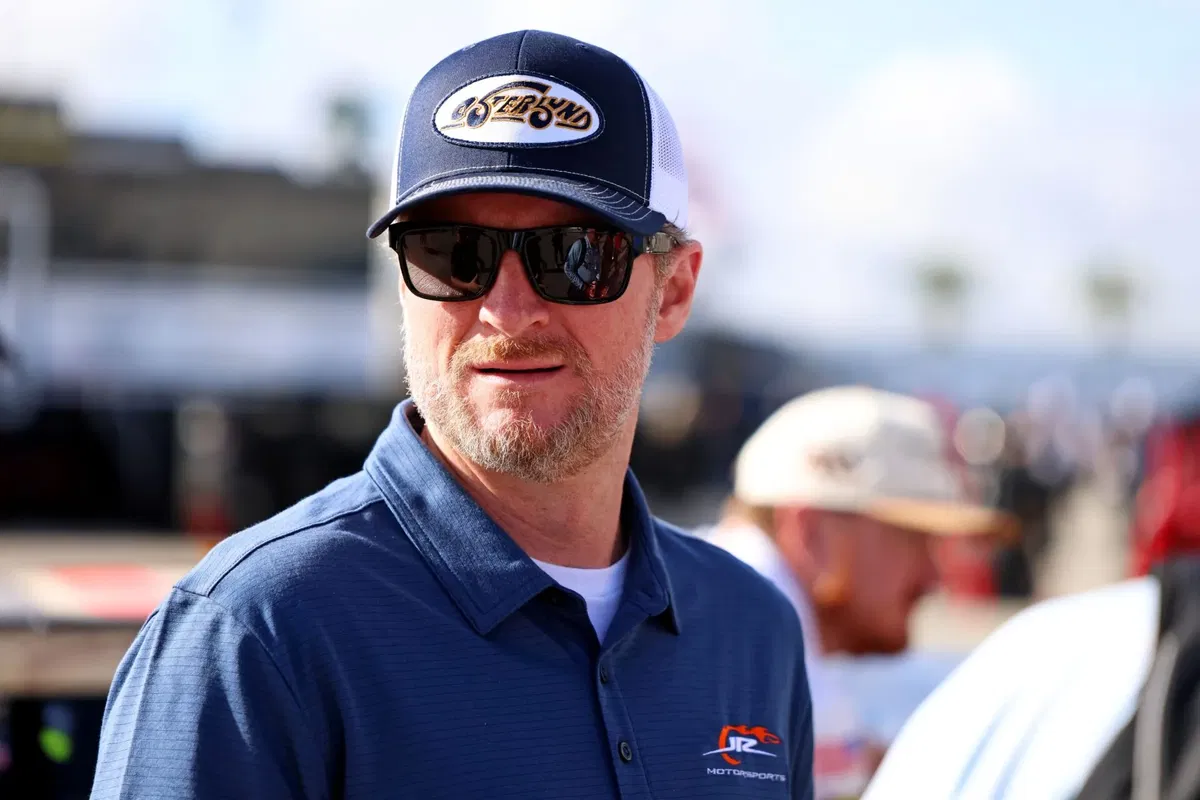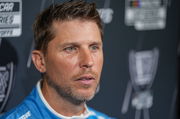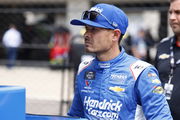
Imago
Credit: Peter Casey-Imagn Images

Imago
Credit: Peter Casey-Imagn Images
“This is a racy-looking car. Now let’s hope it races as good as it looks,” Chase Elliott said at the unveiling ceremony of the Next-Gen car in 2021. And man, that optimism? It was shared by pretty much everyone in the room. The car looked like a game-changer. It was sleek, symmetrical, packed with tech, and finally put all manufacturers on equal footing.
Watch What’s Trending Now!
But fast-forward a few seasons, and that shiny promise has hit a few speed bumps. While the Next-Gen has done wonders on intermediates and brought parity to the field, there’s one glaring issue that even the most loyal NASCAR fans can’t deny. And now, Dale Earnhardt Jr. is stepping in with a brutally honest take that might sting fans a little.
ADVERTISEMENT
Dale Earnhardt Jr. reveals Next-Gen’s dirty air truth
Recently, Dale Earnhardt Jr. didn’t hold back when dissecting the Next Gen car’s flaws. Talking about a pivotal race moment he observed, he said: “The air going under the front of that car to get to the diffuser. If you shut that off, you’re f—–.” What this means is that when a car in front takes a defensive racing line early into a corner to block the car behind from overtaking along the preferred line, it can effectively kill the airflow under the trailing car. This makes it lose downforce and grip.
Dale Earnhardt Jr. illustrated this vividly with an example from the 2025 Brickyard 400 race. “There’s one moment in that race where Erik Jones is behind somebody going down into turn one… they shut the door and he just took off up the racetrack and he gets passed by Byron in the next corner and that right there is the crux of the Next-Gen car.”
This aerodynamic “dirty air” effect is especially pronounced on single-groove or narrow tracks. This includes the Bristol Motor Speedway, Darlington Speedway, and the Texas Motor Speedway. On such tracks, as Dale Earnhardt Jr. pointed out, “You can shut that air off to the car behind you all the time.” The result is fewer meaningful passes and a race dynamic where leaders can control the pace comfortably. Just take a look at the recent Goodyear 400 race at Darlington. The race saw just four lead changes among four different drivers over 300 laps.
ADVERTISEMENT
Dale Earnhardt Jr. noted the implications: “The car is going to be this way at racetracks where there is not a very wide groove… That’s why we struggle at short tracks, road courses, and places like Indy.” He tempered criticism by saying he understands what the racing will look like, but is still hopeful. “I’m still going to find something. I’m still going to be entertained,” he concluded.
This frank commentary by Dale Earnhardt Jr. highlights how NASCAR’s leap toward a more technologically sophisticated car has created unintended consequences for the sport’s hallmark. What was meant to level the playing field is now, ironically, making it harder to catch the car in front. Especially where it used to matter most.
ADVERTISEMENT
Top Stories
Controversial Crew Chief Finds Fresh Start With 17-Yo NASCAR Team

NASCAR Team Owner Demands Charter-Like Deal for Financially Struggling O’Reilly Series

Footage Surfaces of Florida Police Arresting NASCAR Veteran Over Disturbing Public Misbehavior

Ex-Fox Broadcaster Publicly Exposes One of His Own Amidst Denny Hamlin’s Ugly Social Media Feud

Kyle Larson’s Sprint Car Rivals Threatens Criminal Action Against Track Owner Over $15,000 Winner’s Purse

Bold changes take shape as NASCAR eyes the future
Amidst Dale Earnhardt Jr.’s sharp critique of the current Next-Gen car, NASCAR’s leadership is wasting no time in forging a path forward. Chief Operating Officer Steve O’Donnell has confirmed that development on the Gen-8 Cup Series car is officially underway. Now, this signals a new era that seeks to fix the shortcomings drivers have voiced.
“We’re working on everything,” O’Donnell stated, reflecting the broad scope of discussions as NASCAR weighs what the next flagship car should deliver. On the track and for fans. High on the agenda are lessons learned from the Gen-7 design’s struggles at short tracks and road courses. This includes a lack of passing and the stifling effects of dirty air on such tracks, as pointed out by Dale Earnhardt Jr.
ADVERTISEMENT
O’Donnell and the NASCAR R&D team are investigating changes to aerodynamics, especially reducing the underbody sensitivities that have plagued current racing dynamics. Insider reports suggest potential tweaks to both the body and tire formulas. There’s even consideration for different configurations at various track types, all in the quest to restore competitive, entertaining racing.
But Gen-8’s ambitions go further. Motorsport’s global push toward sustainability is front and center. NASCAR’s new car is being designed with eco-friendly fuels. Possibly hybrids, hydrogen, or full electrification on the table. This radical shift positions NASCAR in step with worldwide automotive trends. Finally, cost control and safety advancements remain pillars of the project, as does parity.
With preliminary planning intensifying and on-track testing expected in the coming years, the Gen-8 project is both a response to past criticisms and a bold gamble on the sport’s evolving identity. As Steve O’Donnell promises wide-ranging innovation while keeping an eye on tradition, the next chapter for NASCAR’s race cars looks to be as transformative as any in the sport’s history.
ADVERTISEMENT
ADVERTISEMENT
ADVERTISEMENT
ADVERTISEMENT

